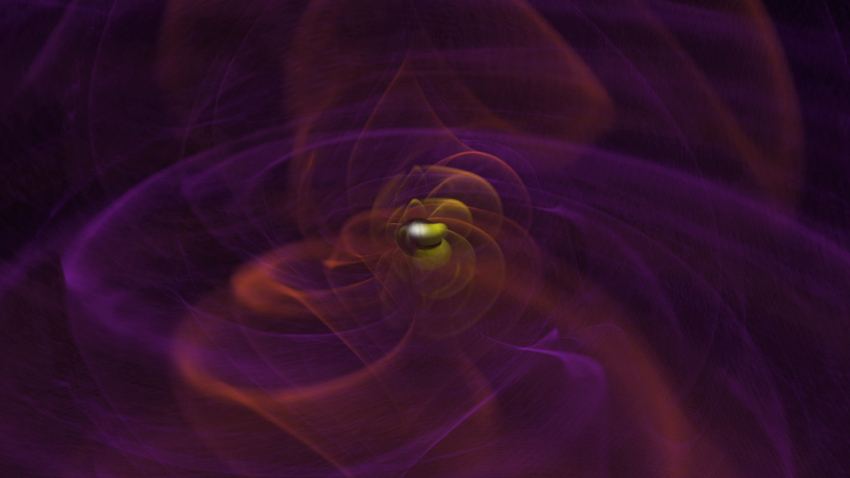
 Credit: NASA/Bernard J. Kelly (Goddard and Univ. of Maryland Baltimore County), Chris Henze (Ames) and Tim Sandstrom (CSC Government Solutions LLC)
Credit: NASA/Bernard J. Kelly (Goddard and Univ. of Maryland Baltimore County), Chris Henze (Ames) and Tim Sandstrom (CSC Government Solutions LLC)
What's Making Waves?
The first direct detection of gravitational waves was made by the Laser Interferometer Gravitational-Wave Observatory (LIGO) on on September 14, 2015 at 5:51 a.m. Eastern Daylight Time (09:51 UTC). The signal received by LIGO's twin observatories matched the temporal distortion of spacetime predicted by Einstein's theory of General Relativity for the collision and merger of two massive black holes. Astrophysicists are less sure whether such events produce any other type of signal. Does the merger of two black holes, for example, generate any type of high-energy electromagnetic radiation? Or any other type of electromagnetic radiation, for that matter? Or do supernovae or other astronomical explosions like Gamma-ray bursts, detected up to now solely through their electromagnetic signatures, produce detectable gravitational waves? Answering these questions is difficult, requiring near contemporaneous detection of both the gravitational wave signal and the electromagnetic signal. The Fermi Gamma-ray Space Telescope provides perhaps the best tool that astronomers have to detect high-energy radiation from gravitational wave events. That's because Fermi's Gamma-ray vision monitors nearly the entire sky simultaneously, so Fermi has a good chance of detecting a Gamma-ray flash associated with any gravitational wave detected by LIGO from nearly anywhere in the sky. Very interestingly, Fermi may have detected a GR signal from LIGO's GW source. Less than half a second after LIGO detected the GW event on September 14, 2015, Fermi's Gamma-ray Burst Monitor detected up a brief, weak burst of Gamma-rays from the same part of the sky.
Published: May 16, 2016
<
HEA Dictionary ● Archive
● Search HEAPOW
● Other Languages
● HEAPOW on Facebook
● Download all Images
● Education ● HEAD
>

Each week the HEASARC
brings you new, exciting and beautiful images from X-ray and Gamma ray
astronomy. Check back each week and be sure to check out the HEAPOW archive!
Page Author: Dr. Michael F. Corcoran
Last modified Tuesday, 27-Feb-2024 10:15:19 EST


